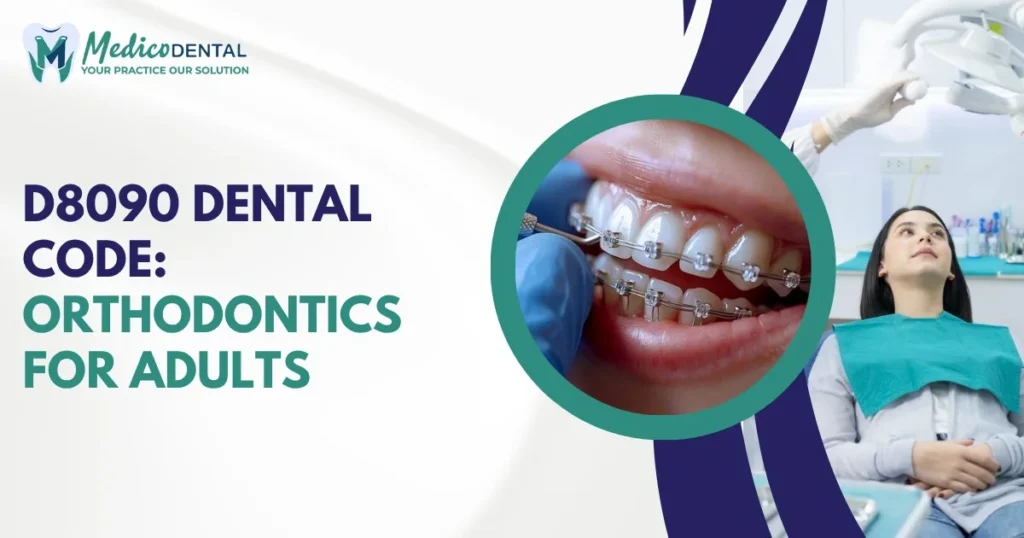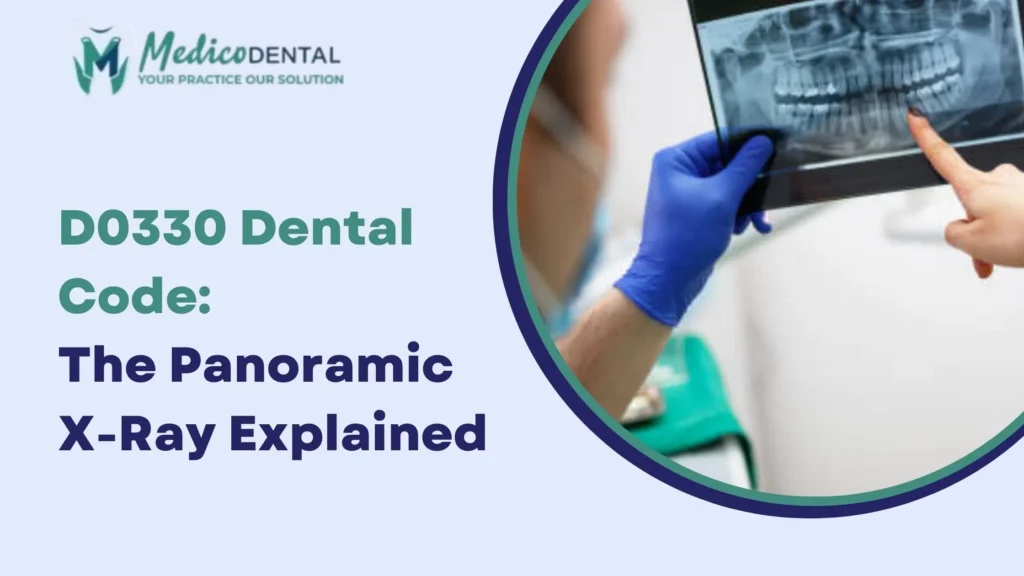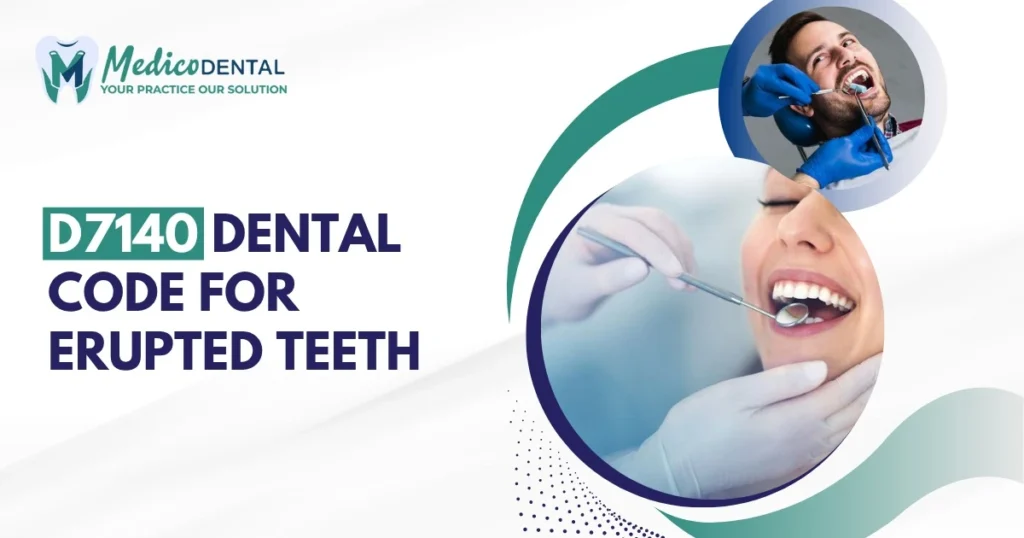Orthodontic treatment is a critical aspect of dental care for many adults, especially for those who are looking to correct misalignment, bite issues, or other dental imperfections. The D8090 Dental Code refers to comprehensive orthodontic treatment for adult patients, typically those who have fully erupted permanent teeth. This code encompasses a wide range of orthodontic procedures aimed at improving both the function and aesthetics of the adult dentition.
Adult orthodontics can involve more complex issues compared to adolescents, such as severe crowding, overbites, underbites, and spacing problems. The goal of using D8090 is to provide a solution that restores the patient’s dental function and provides an aesthetically pleasing smile, often with a combination of braces, aligners, and other dental appliances.
Importance of D8090 in Orthodontic Billing
The D8090 code is essential for accurate and efficient billing for adult orthodontic treatments. It ensures that dental professionals can properly document and claim for the extensive and often lengthy treatment plans required for adults. Since adult orthodontics can differ significantly from adolescent treatment, billing with the correct code like D8090 ensures proper reimbursement from insurance companies and helps avoid claim denials or confusion with other orthodontic codes.
D8090 allows dental practitioners to accurately capture the complexity of treatment, covering everything from initial assessments to appliance adjustments and the final stages of treatment. Proper usage of this code is not only crucial for financial reasons but also for maintaining transparency and compliance with insurance regulations.
What is D8090 Dental Code?
Definition and Scope
The D8090 code stands for “Comprehensive Orthodontic Treatment of the Adult Dentition.” This code is specifically used to bill for a complete orthodontic treatment plan for adult patients. It includes the use of various orthodontic appliances to correct alignment issues and improve bite function.
This comprehensive treatment involves both initial diagnostic procedures and continued monitoring, adjustments, and corrections over time. The code can be used for patients who require either fixed (traditional) braces, removable appliances like clear aligners, or additional appliances like headgear to address more complex dental issues.
The D8090 code is used in situations where the orthodontic treatment will span several months or even years and requires multiple appointments for adjustments and follow ups.
Key Differences Between D8090 and Other Orthodontic Codes
The primary distinction between D8090 and other codes such as D8080 (for adolescent treatment) is the target patient group and the types of dental issues addressed. While D8080 is designed for adolescents, D8090 applies to adults, who often present with more complex cases, such as significant bite misalignment, crowding, or spacing that has developed over time. The D8090 code is used when permanent teeth are fully erupted and require extensive treatment.
In addition, D8090 might be used in combination with other codes for additional services such as space maintainers, extractions, or specialized appliances that may be necessary for adult patients.
When is D8090 Used?
Adult Patients vs. Adolescents
D8090 is specifically tailored for adult patients who require comprehensive orthodontic treatment. These are patients who typically have all their permanent teeth and are facing dental issues like misalignment or bite problems that need correction. The D8090 code is different from D8080, which applies to adolescents and is more focused on growing patients with the potential for future dental changes.
In contrast to adolescents, adults often require more intensive or long term treatments due to established dental conditions that have developed over time. Adult orthodontics may also involve addressing issues like worn teeth, damaged gums, or concerns related to jawbone health, which aren’t typically seen in younger patients.
Common Scenarios Requiring D8090
Some common cases where D8090 would be used include:
- Overbites/Underbites: Adults who have significant bite alignment issues that affect their ability to chew, speak, or smile properly.
- Severe Crowding: When teeth overlap or do not have enough room, requiring braces or aligners to shift the teeth into proper alignment.
- Spacing Issues: Large gaps between teeth that need to be corrected to improve both function and appearance.
- Jaw Issues: Misalignments involving the upper and lower jaws, which may require additional appliances like headgear or other orthodontic devices.
Treatment Procedures Covered Under D8090
Braces (Fixed and Removable)
Braces are one of the most common treatments covered by D8090. These can either be fixed braces, which are permanently attached to the teeth for the duration of treatment, or removable braces, such as clear aligners, which can be taken out for eating and cleaning.
Fixed Braces
Typically involve metal brackets and wires that are attached to the teeth. Over time, the wires are adjusted to gradually move the teeth into the correct position. This treatment is common for patients with more severe misalignment or bite issues.
Removable Braces (Clear Aligners)
Clear aligners like Invisalign are becoming increasingly popular among adults, particularly for those with mild to moderate misalignment. Aligners are custom made to fit the patient’s teeth and gradually shift them into place. These are often preferred by adults due to their discreet appearance.
Clear Aligners
Clear aligners are a more modern and aesthetically pleasing alternative to traditional metal braces. They are particularly popular with adults who wish to straighten their teeth without the visibility of traditional braces. Clear aligners are custom designed for each patient and can be removed for eating or cleaning, making them convenient and less intrusive for daily life.
The use of clear aligners is especially suitable for adults with minor to moderate orthodontic issues, such as mild crowding or gaps between teeth, who want a more discreet treatment option. D8090 can cover the full course of aligner treatment, including multiple sets of aligners and regular checkups.
Headgear and Other Orthodontic Appliances
In addition to braces and clear aligners, headgear and other orthodontic appliances may be necessary for some adult patients to address more complex issues, such as jaw misalignment or severe bite issues. Headgear helps to control the growth of the jaw and reposition the teeth.
Other appliances might include retainers, space maintainers, or expansion devices, depending on the individual needs of the patient. These appliances help to ensure the teeth are properly aligned and maintain their position throughout the treatment process.
Insurance Coverage for D8090
Insurance coverage for the D8090 Dental Code can vary widely depending on the patient’s plan, the insurer’s orthodontic policies, and whether the treatment is considered medically necessary. Most insurance companies classify orthodontic treatment for adults as optional or cosmetic, which means coverage is often limited. However, some plans do provide partial coverage usually a fixed lifetime orthodontic benefit that can be applied toward the cost of D8090 treatment.
Insurance companies typically require:
- A comprehensive orthodontic evaluation
- A detailed treatment plan
- Diagnostic records (X rays, photographs, impressions, digital scans)
- A clear justification for why the adult patient needs full orthodontic intervention
Plans differ in how much they reimburse and how they structure payments. Some pay a percentage upfront, while others distribute payments over the course of treatment.
How Insurance Plans Handle D8090
When it comes to handling D8090, insurance companies typically follow one of these patterns:
Orthodontic Lifetime Benefit Approach
This is the most common structure. The insurer sets a lifetime orthodontic maximum (e.g., $1,000–$2,000), which applies to the entire course of treatment.
Percentage Based Reimbursement
The plan might cover a fixed percentage (e.g., 30–50%) of the D8090 treatment cost. However, adult orthodontics often receive lower percentages than child or adolescent orthodontics.
Medically Necessary Orthodontics
Some insurers offer better coverage if the patient meets medical necessity criteria for example, severe malocclusion affecting chewing, speech impairment, or jaw alignment issues.
Staged Payment Over Time
Instead of paying one lump sum, insurance may release payments quarterly or semi annually throughout the treatment duration.
Common Issues with D8090 Billing
Billing the D8090 code can be tricky for several reasons:
- Adult orthodontic treatment is often excluded or minimally covered, leading to partial denials.
- Confusion with D8080 (adolescent orthodontics) can cause claim rejection if the wrong code is used.
- Lack of supporting documentation insurance requires detailed proof that the treatment is comprehensive.
- Missing pre authorization some plans need approval before treatment begins.
- Improper claim timing, submitting claims too early or too late can disrupt reimbursement cycles.
- Insurance clawbacks if the patient terminates their plan during treatment, insurers may reclaim overpaid amounts.
Tips for Maximizing Insurance Reimbursement
To improve the chances of full or partial reimbursement:
- Submit complete diagnostic records (photos, X rays, periodontal charts, models).
- Provide a detailed orthodontic narrative explaining the medical reason for treatment (e.g., functional bite issues).
- Verify orthodontic benefits before starting treatment to avoid unexpected surprises.
- Use pre authorizations even if not required; they reduce the risk of denials later.
- Ensure correct code usage D8090 must clearly match adult treatment.
- Document every appliance and adjustment if the insurance requires ongoing claims.
A well prepared claim is the strongest tool for higher approval rates.
D8090 vs. D8080: Understanding the Differences
Although both codes refer to comprehensive orthodontic treatment, they serve different age groups and clinical purposes.
Comparing D8090 and D8080 for Comprehensive Orthodontic Treatment
| Feature | D8090 | D8080 |
| Patient type | Adults (fully erupted permanent teeth) | Adolescents (still growing) |
| Complexity level | Often higher due to mature bone structure | Typically lower complexity |
| Insurance coverage | Limited or lower priority | Higher likelihood of coverage |
| Treatment approach | May require additional appliances | Often growth guided treatment |
Adults generally require more complex corrections, making D8090 more comprehensive and often more expensive than adolescent orthodontics.
When to Use Each Code
- Use D8080 for adolescents receiving full orthodontic treatment while still growing.
- Use D8090 for adults with fully erupted dentition, regardless of appliance type (braces, aligners, headgear, etc.).
Correct dental coding ensures:
- Accurate reimbursement
- Compliance with insurance rules
- Reduced claim denials
Example of D8090 in Practice
Case Study: Adult Orthodontic Treatment for Overbite and Crowding
A 30 year old patient presents with:
- A severe overbite
- Moderate to severe crowding
- Difficulty chewing
- TMJ discomfort due to improper alignment
Treatment Plan
The orthodontist develops a comprehensive plan involving:
- Fixed braces for 18 to 24 months
- Elastics to correct bite position
- Periodic adjustments
- Retainers after active treatment
Since the treatment includes full correction of adult dentition and requires long term orthodontic management, D8090 is the correct code.
Outcome
The patient achieves:
- Proper bite alignment
- Improved oral function
- Enhanced smile aesthetics
- Reduced jaw discomfort
The claim submitted with D8090 is partially reimbursed under the patient’s lifetime orthodontic benefit.
Conclusion
The D8090 Dental Code plays a crucial role in defining and billing comprehensive orthodontic treatment for adults. It applies to complex cases involving braces, aligners, headgear, and long term orthodontic correction. Using this code ensures accurate reporting and helps dental practices maintain both clinical and financial clarity.
Correct usage of D8090 prevents claim denials, improves reimbursement rates, and allows practices to deliver full treatment without administrative delays. For adult patients seeking functional and aesthetic improvements, D8090 supports a structured orthodontic journey backed by reliable documentation and coding accuracy.
FAQs
Does insurance always cover D8090?
Ans. No. Many insurance plans either partially cover or exclude adult orthodontics unless medically necessary.
Can clear aligners be billed under D8090?
Ans. Yes. Aligners qualify as comprehensive orthodontic treatment for adults.
Is pre authorization required for D8090?
Ans. Often yes, failing to get it can result in denials.
What documents are needed to bill D8090?
Ans. X rays, photos, treatment plan, periodontal status, and diagnostic impressions.



